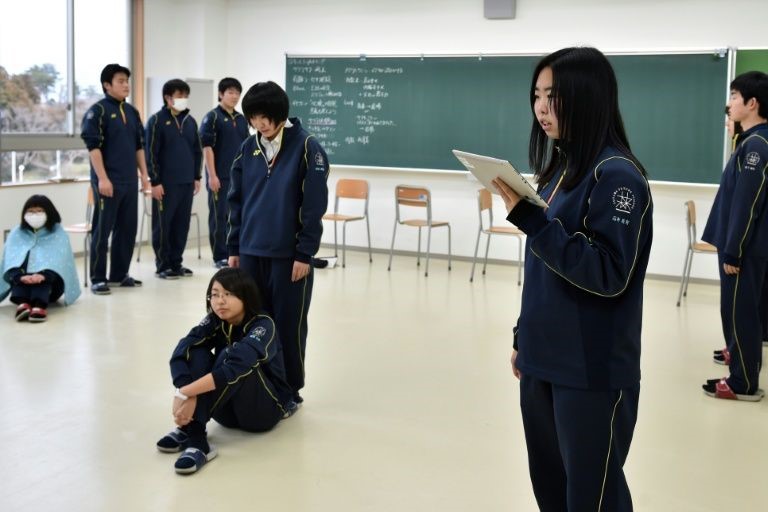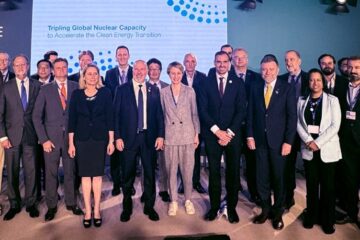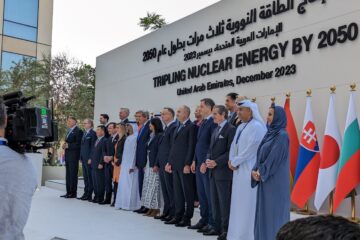Six years later – learning the right lessons from Fukushima
It’s hard to believe that six years have passed since the devastating earthquake and tsunami in Japan that resulted in the accident at the Fukushima nuclear power plant. Over the past six years there have been many arguments about the merits of actions taken both during and following the accident and on the lessons learned to move forward.
Three years ago, we wrote about the status focusing on the plight of the people of Fukushima. Today we want to revisit this theme as, in the end, it is all about the people. It is not a question of whether or not evacuation was the right thing to do or how much the decommissioning of the Fukushima units will cost. The objective of nuclear safety is to protect people. So, if we want to evaluate how we are doing, we need to look at the plight of the people of Fukushima, ensure they have a path back to a normal life and learn how to avoid putting people through the same amount of trauma in the future.
Let’s start with what we know. We now know that no one will die from radiation released as the doses were very low. In fact, actual monitoring of people has shown even lower doses than were predicted when it was first said there would be no radiation health impacts. We now know how to improve nuclear plant designs to reduce the risk of future similar accidents and ensure that even if one should happen, the risk of significant releases is also reduced. We now know that taking decisions on evacuations have large impacts on populations that may be worse than leaving them in place. We also know that there was insufficient regulation and guidelines on recovery from accidents and on when evacuated areas are once again safe to allow people to go home.
These are all important. And these will all help to make nuclear power safer in the future as we must always learn from an industrial accident of any type how to reduce future risk.
But what is really important is bringing this event to an end – and that means having all those impacted achieve some level of normalcy to their lives and, of more importance, to have hope for the future. As of the end of March many more areas are going to be declared safe for repopulation, an important milestone. Hopefully this will help as people get to go home. But many will not. People are still afraid. Recent surveys suggest that 62.3% of people do not want to go home. This fear comes from a lack of trust in government (and all authorities). After being told an accident such as this one would never happen; having been told to evacuate and having little understanding of when they can return home and what it means to have a safe level of radiation – it is easy to see how the population would lose trust in its leaders. Or in other words “you told me this was safe and it wasn’t – why should I believe you when you tell me that its safe now?” This is a very difficult question to answer.
To make things worse, there is also a severe cultural issue in Japan where people who lived through the accident have a stigma that results in discrimination from others and brings shame to those impacted. “According to a 2017 survey by Akira Imai, a professor at Fukushima University, and the Asahi Shimbun, 62 percent of the 348 Fukushima evacuees interviewed have experienced or witnessed bullying and discrimination for having been exposed.” They live each day with severe anxiety – over information, fear of discrimination, and the fear of the unknown when it comes to radiation. This is not new. Japanese people who lived through the bombings of Hiroshima and Nagasaki have suffered the same where about 80 percent of atomic bomb survivors chose to hide their status as survivors — from anyone, including spouses — for fear of being discriminated against. There is even a name for this; these survivors are known as the hibakusha.
And then there is compensation – there is variation between different types of evacuees, whether they were forcibly or voluntarily evacuated – and then let’s not forget those that have left their homes, not related to the nuclear accident but because their homes were destroyed by the tsunami. The lives of these people are rarely discussed as the nuclear story continues to dominate the news.
So, what are the lessons we need to learn? Again, as we have said before, from the industry point of view we need to change the narrative on nuclear accidents. As long as people believe that the consequence of an accident is world ending, the probability doesn’t matter. (I will discuss the challenges of how people relate to probabilities in a future post). But we have learned that this result is not true. In reality, there needs to be a new paradigm where the message is as follows:
- The risk of a nuclear accident is very low and is always getting even lower
- In the event of an accident the risk of releasing radiation to the environment is also very low; and
- Even in the unlikely event that radiation is released, the public’s health and safety can be protected.
But this is not enough. Since we know that the most significant impact of an accident is psychological trauma, then this needs to be addressed. First and foremost, that means rebuilding trust in authorities, a daunting task. People need to know that when authorities say to evacuate, then it is necessary; that when they say it is safe to come home, that it is safe; and most of all, that when they say your health and your children’s health is not at risk, that you can believe them. This is a very tall order and will take a long time.
To build this trust also requires ensuring that accidents like this one have an ending. People cannot live with uncertainty for years and years. Following the Kobe earthquake in the 1990s, most people were back home within 5 years. There needs to be clear guidelines on when to evacuate and when to repopulate. There also needs to be clear guidelines on how long is too long so that if it is not practical to repopulate within a specified period of time then people are resettled.
And finally, as we have said before, we need new research on the impact to people in affected areas following nuclear accidents so we can better understand how to reduce their fear and make them comfortable they can be protected and indeed, have a healthy happy future. This means much more than emergency planning to get people out of harm’s way if needed when an accident happens. It also means helping impacted people until they can resume their normal lives. This will lead to better decisions following events with an emphasis on protecting people.
The people of Japan are very resilient. They have suffered through terrible tragedies both man induced and natural. Although many thought it would become a wasteland, today Hiroshima is a vibrant city after being targeted by an atomic bomb, as is Kobe following a devastating earthquake. I am certain that the cities surrounding Fukushima will achieve the same. But what is critical is that we find ways to reduce the stress and provide confidence in the future. That is the challenge we face. And this takes leadership, both in government and in industry to not react radically, gain the population’s trust and to show that in spite of such events, life continues and there remains hope for the future.






8 Comments
Doug Hink · March 29, 2017 at 9:02 pm
Milt, very good piece. The social impact aspect has been neglected and a process/program is needed to address it in future. Perhaps there are models in other industries such as aviation that may help.
Jerry Cuttler · March 29, 2017 at 10:05 pm
Why doesn’t the accident end? Follow the money. Who all benefits by prolonging it?
John Snyder · April 1, 2017 at 6:51 pm
Thanks for the very constructive contribution to an extremely important discussion! The nuclear industry can’t get bogged down with addressing the rampant corruption post Fukushima. It needs to focus on the issues outlined in this report.
gary fv · March 30, 2017 at 12:16 pm
Posted simultaneously as Westinghouse nuclear goes bankrupt in the US.
The accident doesn’t end because the technology needed to resolve the issue has not been developed yet.
I do not believe your statement; “We now know how to improve nuclear plant designs to reduce the risk of future similar accidents and ensure that even if one should happen, the risk of significant releases is also reduced. ”
It appears to me that you are all neglecting the radioactive contamination aspects of ongoing low level radioactivity, unless you believe in hormesis. I do not.
Colin Megson · April 1, 2017 at 11:42 am
Your comment does not display radiophobic tèndancies but an unreasonable fear of low level radiation. Nuclear power can only be substituted by fossil fuels as is the case in Japan. So the authorities, also displaying unreasonable fear of low level radiation, are no different to millitants in a war zone stoppin aid convoys getting through – the bullets of heavy metals, radionuclides and particulates from fossil fuel burning are flying thick and fast around everyone and the nuclear aid convoy is not allowed through because it’s got syringes with sharp needles.
Dan Meneley · March 30, 2017 at 4:48 pm
Milt: My opinion is that this fear will end only after those who are now fearful pass on, and perhaps not then. Education is the only cure for this type of fear. It might take more than one more generation of operating nuclear plants with a high ratio of good over poor performance, in order to balance the scale.
Until then we must continue to pay a high price for the wrong direction chosen by (mostly) US health authorities after the end of WWII. We can correct the LNT stupidity with great difficulty, I think. It would be a great place to start.
Dan
John Snyder · April 1, 2017 at 7:27 pm
Education won’t change anything. People need trust in proponents of the nuclear industry. If we say nuclear is safe, then we need to prove it. The industry should be self-policing. If there are existing, operating reactors that need to be shut down or upgraded, then the industry needs to put pressure on the operators to do what’s right. If we tell evacuees that it’s safe to return to their homes, then the industry needs to back up that claim with monetary compensation in the form of cancer insurance and free cancer-related healthcare for life, among any other appropriate compensation.
You build trust by keeping your promises. Most people will accept that there is no such thing as “zero” risk in life. What’s important is how the industry responds to accidents like Fukushima.
John Snyder · April 1, 2017 at 7:57 pm
In my opinion, the industry needs to take this report very seriously and respond accordingly.
Comments are closed.